In this episode, we explore the beautiful west coast of Croatia. We walk the cobbled streets of medieval towns and explore ancient castles and fortresses as we work our way down the coastline of the Adriatic Sea. From the Istria peninsula up north down to the rock climbing Mecca of Paklenica National Park, just outside of Zadar. It is off season and we have it all to ourselves this winter!
In the last episode of nomads for love, we drove from Sweden to Croatia, a 2500 km journey through Europe under time pressure to leave the Schengen area before Scotts’ visa expired. Now we are traveling the world together. This is our story—as nomads for love. We live full time in a van, jumping borders every 3-months, just so we can be together while we wait for immigration!
Istria
We start our Croatian journey up north in Istria. It is the largest peninsula in the Adriatic Sea and while most of it belongs to Croatia, it has a complicated history and Slovenia and Italy also have claims. It boasts a beautiful coastline and a lovely Mediterranean climate down south. Having left a cold and wintery Scandinavia behind, the warm and sunny beaches are a welcome sight.
Umag
We park up for a few days in Umag, a popular summer resort town most known for its yearly ATP tennis tournament. We found it completely deserted this time of the year and enjoy some really nice and quiet downtime here. It is a bit ironic… we just park up good old Dory in the middle of this fancy resort area for free — for days! We don’t see a soul around for days. Just what we needed!
Eager to keep exploring we follow the coastal road south without much of a plan. We stop for an afternoon hike up an old climbing crag. The site has been suspended to protect wildlife, but the views over the valley are still worth the climb. That evening we stop to enjoy the sunset views from Oprtalj, a tiny charming medieval town perched high above the Mirna Valley. These charming hilltop towns, surrounded by olive groves, are typical for the region and well worth the visit.
Rovinj
We come across the romantic fishing port of Rovinj, home to one of the most popular rock climbing areas in Istria. The site was once a quarry and many Venetian palaces were built from the stones excavated from here. We get a few scenic climbs in before the sun drops into the sea. As darkness falls we follow a local climber and fellow van lifer into Rovinj for drinks and pizza. The town is very quiet despite the weekend but we have a very nice evening learning more about the local culture.
Pula
We continue south to Pula on the southern tip of the peninsula. It is the largest city in Istria and known for its ancient Roman heritage. Most famous is the arena, it is among the largest and best preserved Roman amphitheaters in the world. While the Colosseum is really cool, the Pula market left a much more vibrant and lasting impression with its colorful fruit and produce vendors.
Krk Island
Finally leaving Istria we cross over the mile-long bridge connecting the mainland with Krk, the largest Croatian island in the northern Adriatic Sea. We spend a few days exploring its quiet deserted beach communities and rich historical heritage. It is quite remarkable. We can park up almost anywhere without any of the locals taking much notice of us. Dory kind of blends in not being a flash new camper, but just an old beat up van among the rest — although glorious blue of course. What attention she does get is mostly good, she makes people smile — or shake their heads.
Driving through Baška we stop in to visit the Church of St. Lucy, a rather unassuming structure that sounded much cooler than it was. Apparently, this is where the Baška tablet was found. It is a famous monument of early Croatian literacy, dating from about 1100, weighing in at an impressive 800 kg. But since the original slab is kept on display in Zagreb, you are just left with a rather anonymous tiny stone church…
We continue on our quest. Strolling through the narrow cobbled streets of the city of Krk was a much more impressive endeavor. We find a deserted town serving up a beautiful walk through history along with its two-thousand-year-old walls, Frankopan family castle and the 5th century stone Cathedral complex which dominates the city.
We continue exploring Kirk and come across an extensive network of stone walls crisscrossing the countryside. Intrigued we learn that these dry stacked walls were built out of agricultural necessity by farmers clearing space to grow olive trees and grapevines. This practice left stones stacked around their geometric plots creating a grid stretching on for kilometers.
Rijeka and Zadar
Enjoying the quiet life out in the more rural areas we decide not to spend any time in either Rijeka or Zadar, both larger cities. We just stop for laundry in the former and duck in for a quick dentist appointment in the latter on our way south. Turns out Croatia happens to be one of the best countries for dental tourism boasting the latest technology at competitive prices while avoiding long waiting times. We got in and out the same day we called, fixing a painful tooth while passing through town. Fantastic!
Paklenica National Park
Our goal was to get to Paklenica, a beautiful national park just outside of Zadar. The main attraction is an amazing gorge which is the most visited climbing site in Croatia, the largest in Southeast Europe, with over 360 equipped routes. Aside from the epic climbing, the park also hosts about 200 km of trails and paths and is home to wildlife such as eagles, falcons, and bears.
It is a bit too windy to climb when we first arrive, so we start with a day hike up to the Manita peć cave. It is the only cave in the park area that operates tours, although it is closed for the season like everything else around here. Apparently, this place is a true madhouse in the summer and completely dead through winter — like now. Just the way we like it. We meet a few diehard climbers who brave the icy cold Bora winds in the crag, but mostly we have the place to ourselves.
We find a beautiful beach to park up on for a while and seriously consider moving in… at least that is what it must have looked like. We end up staying here for over a week. Climbing, hiking, swimming and just enjoying the last few days of summer.
Finally, the seasonal rains start in earnest and the crazy strong and gusty Bora winds become more frequent. We decide to move on.
We continue driving south along the coast, still chasing summer. From lovely meetings with fellow travelers to midnight wakeup calls by the police and exploration of massive abandoned ex-communist concrete structures to taking Dory up one of the most dangerous roads in the world (!) — but more on that in the next episode of nomads for love. We’ll see you then!


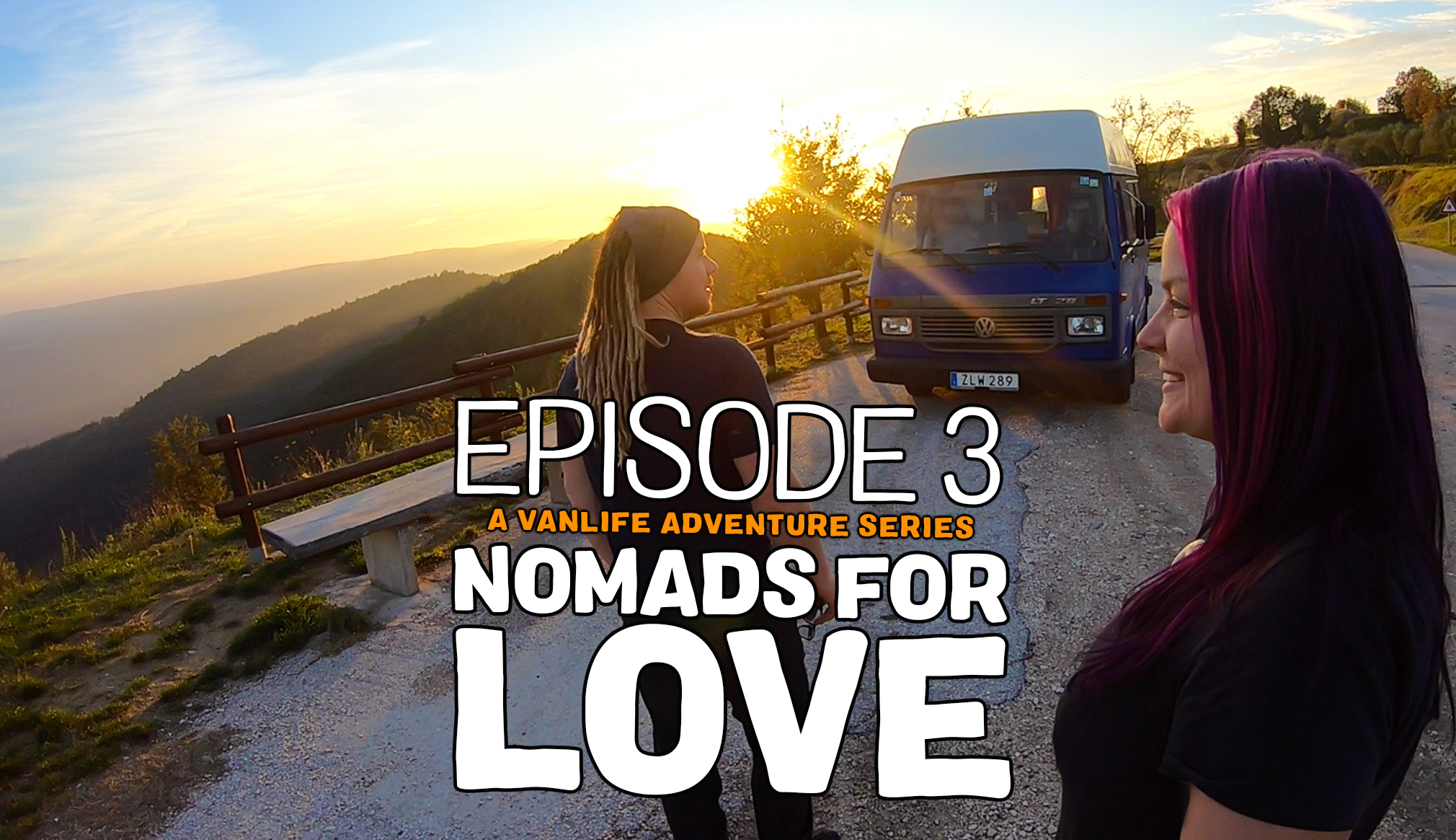
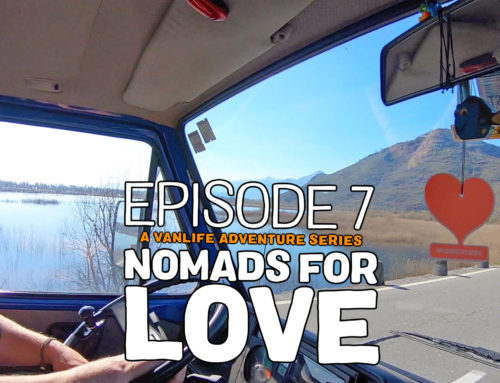
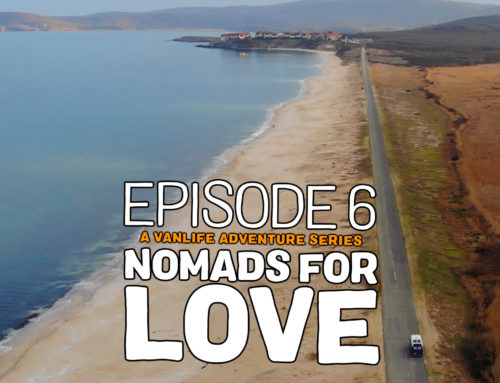
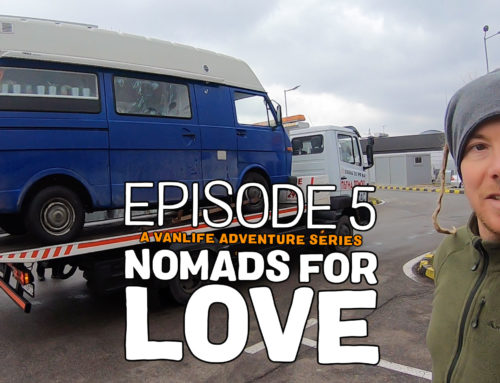

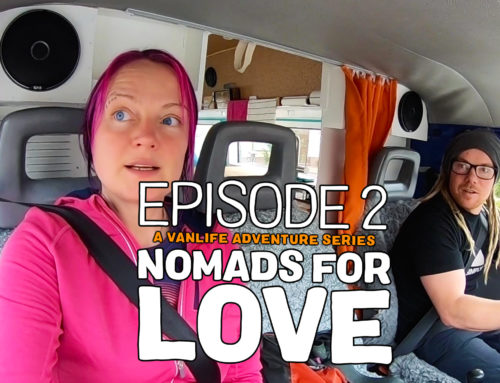
Leave A Comment